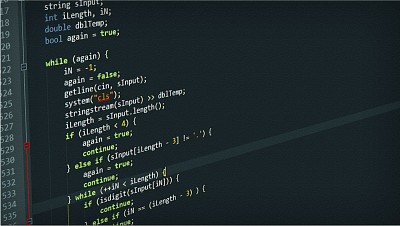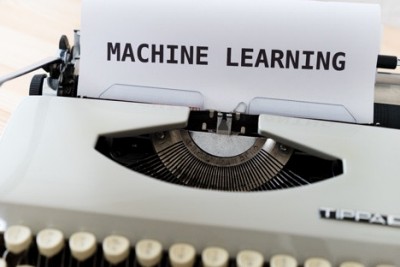Imagine yourself in a position where you must invest in a high-involvement product you have yet to learn about. What will you do in such a situation? Surely you won’t base that purchase on a single opinion. Instead, you would go and ask multiple people or do some research about it on your own. What will you do if you cannot reach a solid conclusion, and how would you know what’s best for you? This is where Ensemble Learning steps up and helps make the decision-making process easier for you.
Let’s get into the article and see how ensemble learning helps you achieve this.
What is Ensemble Learning
Ensemble learning is a supervised learning technique where you feed two or more variations of models to train the algorithm and enable it to reach an error-free consensus. To help you understand better, let’s break down ensemble learning into its smaller components below:
Ensemble Theory:
The ensemble theory says that the best way to make accurate predictions is by reducing the spread of the predictions, making your model more robust, and improving its overall ability to make the correct predictions by examining various models instead of just one.
The idea here is to reduce the variance and bias in the predictions by combining multiple models that are trained on different subsets of the data or using different algorithms. By doing so, the ensemble model can capture different aspects of the data and mitigate the weaknesses of individual models, resulting in a more robust and accurate prediction.
Classifiers/Learners
After you have collected your data and performed certain statistical operations on that model to obtain a result, it becomes a “Classifier” or a “Learner.” A classifier may be termed weak or strong based on its results’ reliability and accuracy. A classifier is considered weak because of the high variance or high bias in its effects. The main aim of creating a strong classifier is to reduce that variance or bias by combining the results of multiple weak classifiers.
Ensemble Size
Ensemble size refers to the number of learners you must provide your algorithm as the training dataset to reduce the chances of errors in the results. At first, about ten learners were considered enough to train the algorithm, but over time some have proven to provide better results when fed with more learners. Further studies showed that providing too many data members may result in “Overfitting.”
Algorithms
Ensemble learning algorithms are different techniques through which we obtain the results for the base learners, i.e., building blocks for the strong classifiers. The most popular ensemble learning algorithms are Bagging, Boosting, and Stacking. We will get into their details later in this article.
Heterogenous/Homogenous Ensembles
The main aim of ensemble learning is sometimes to increase diversity to reduce errors. When you use diverse types of base learners to make a Heterogeneous Ensemble, you don’t have to put extra effort into adding variety to your data whereas, when you use the same types of learners (Homogeneous Ensemble), you must use techniques such as randomizing the steps or injecting noise to add diversity in your data.
-

Bagging vs Boosting vs Stacking
-

Stacking in Machine Learning
-

When Should I Use Ensemble Methods?
Ensemble Methods
As discussed, the ensemble method obtains results by averaging multiple models. Let’s go through the three most essential and well-known ways, along with their respective advantages and disadvantages.
- Bagging
Another name for this algorithm is “Bootstrap Aggregation.” What happens here is that your training dataset is divided into multiple subsets. From those subsets, data points are selected randomly (and placed back in the set to be selected again). Those subsets are evaluated individually, but parallel predictions are made for every subgroup, sometimes called “Bootstrap Sampling.” This shows that one model can be used in such a way that it can turn a weak learner into a strong learner. Not only that, but this algorithm also reduces the variance in the dataset. On the contrary, the dataset’s bias level also goes up, and so does the computational cost of this algorithm.
When to Use: High variance models, where overfitting is a concern. E.g., decision trees.
- Boosting
This algorithm tries to focus more on what not to do. This means that whenever a dataset is fed to this algorithm, it focuses more on where it failed to produce desired results. It then forwards those weak points onto the following dataset, which tries to correct them, and this goes on until the “strongest’ learner is obtained with the most negligible chances of error. Instead of analyzing the datasets parallelly, like done in bagging, they are explored in a sequence. This sequential processing makes this algorithm easy to work with and impervious to overfitting. Since this algorithm works to improve the shortcomings of only those datasets before it, it can be prone to any outlier.
When to Use: High-bias models, such as linear models, and situations where the data is imbalanced.
- Stacking
The stacking algorithm divides all its classifiers into two classes, Base Models (Level-0) and Meta Models (Level-1). The base models are all the different datasets you feed into the algorithms, and predictions are made about these datasets. To create the meta-model, final predictions are made using previous predictions and establishing a relationship between both. Building a relationship function makes the predictions made by the stacking method much more reliable. In addition, this is easy to implement, but it becomes overly complicated when it comes to computing, especially in case you have extensive datasets.
When to Use: Combining models with different strengths and weaknesses.
Applications of Ensemble Learning
One example of ensemble learning that might intrigue you is that ensemble learning is used to produce images and make predictions about the living conditions on far-off planets. This is called “Remote Sensing.” (Remote sensing means collecting data about different states in an area without being physically present). Another type of data is collected from various satellites and sensors. This allows experts to make correct predictions about multiple conditions on different planets.
Another situation where ensemble learning is used is “Predictive text.” Have you noticed that initially, your keyboard may correct you as you write some words, but over time it starts suggesting words that you can add to the text based on how you use that particular word on average? This has also proven to speed up the process of text inputs.
To Sum Up
Ensemble learning is a powerful machine learning technique that can be used to evaluate and examine multiple sets of data and come to accurate conclusions that then help us in our decision-making process. We discussed the three main methods that help implement ensemble learning along with their pros and cons. Here’s a table summarizing their strengths and weaknesses:
| Ensemble Method | Advantages | Disadvantages |
| Bagging | Reduces variance and improves accuracy, can turn weak learners into strong learners, and works well with high variance models | Can increase bias, may not work well with low-variance models, and can be computationally expensive for large datasets |
| Boosting | Improves accuracy and reduces bias, works well with high-bias models and imbalanced data | Can overfit with noisy data and outliers, can be computationally intensive |
| Stacking | Improves prediction accuracy by combining models with different strengths and weaknesses, and can build a more reliable meta-model | Can be complex and time-consuming to implement, especially with large datasets |

